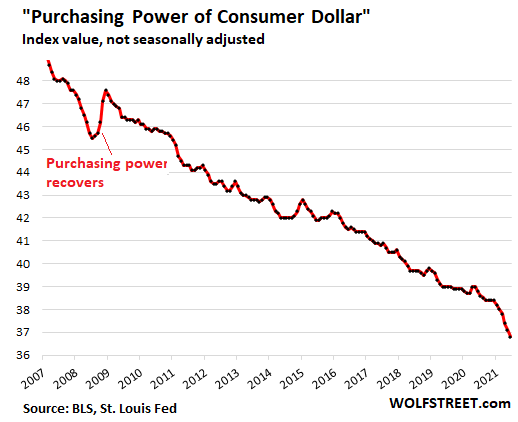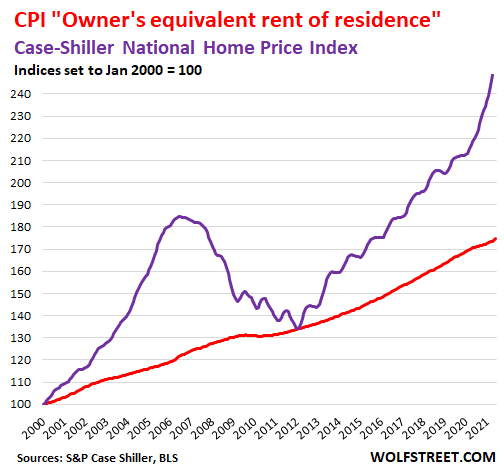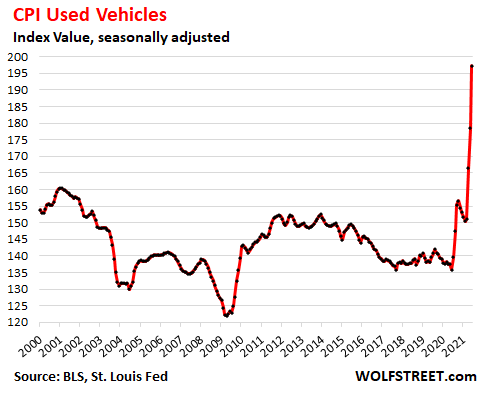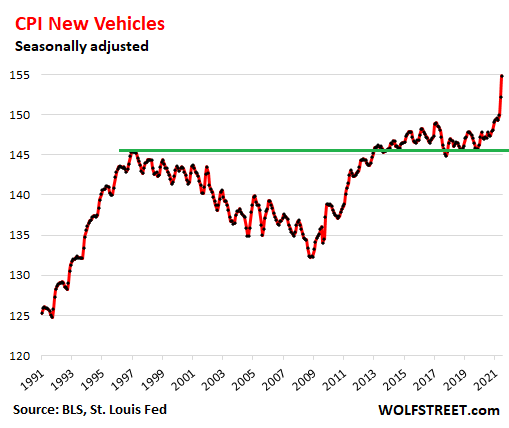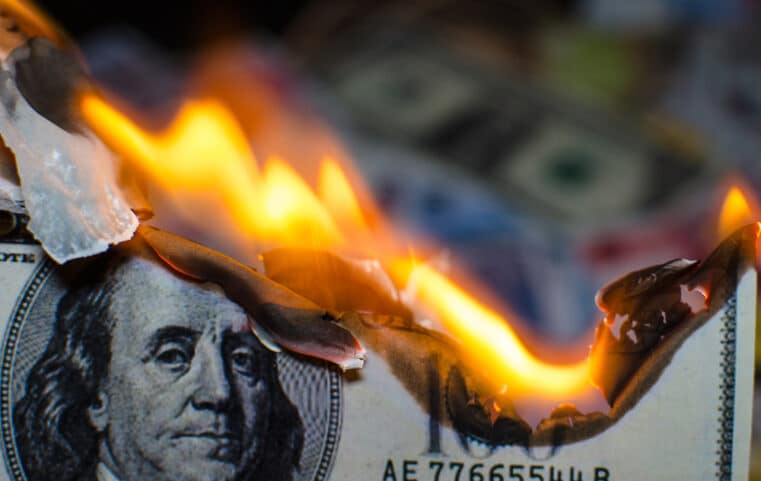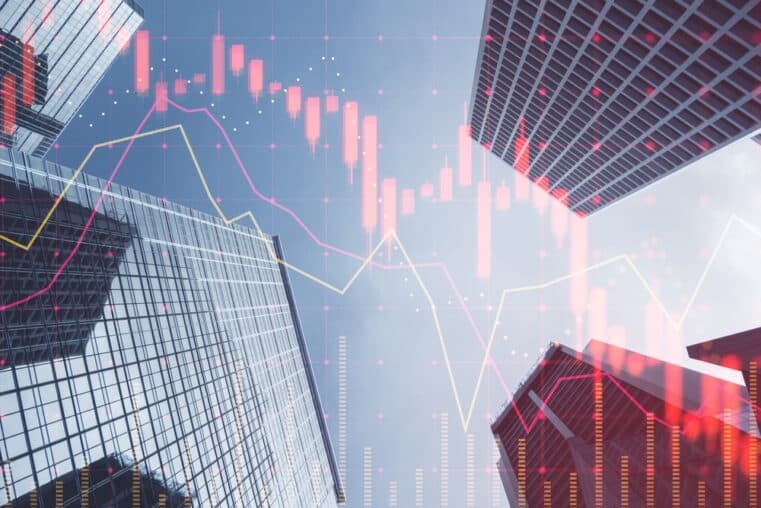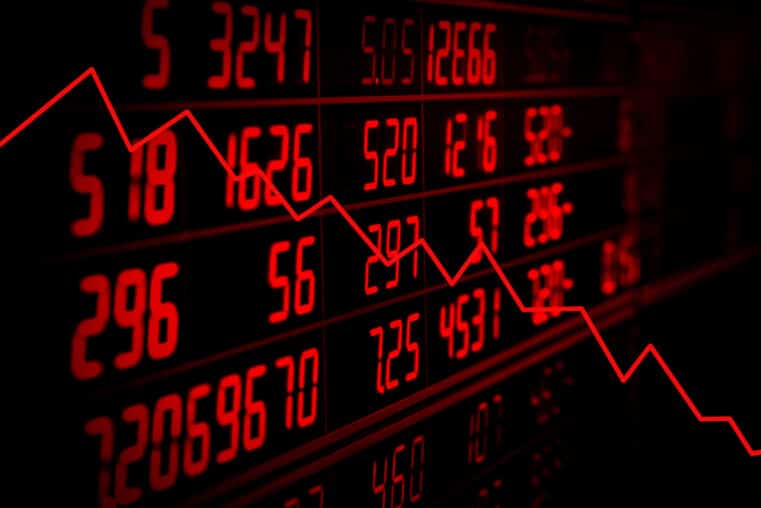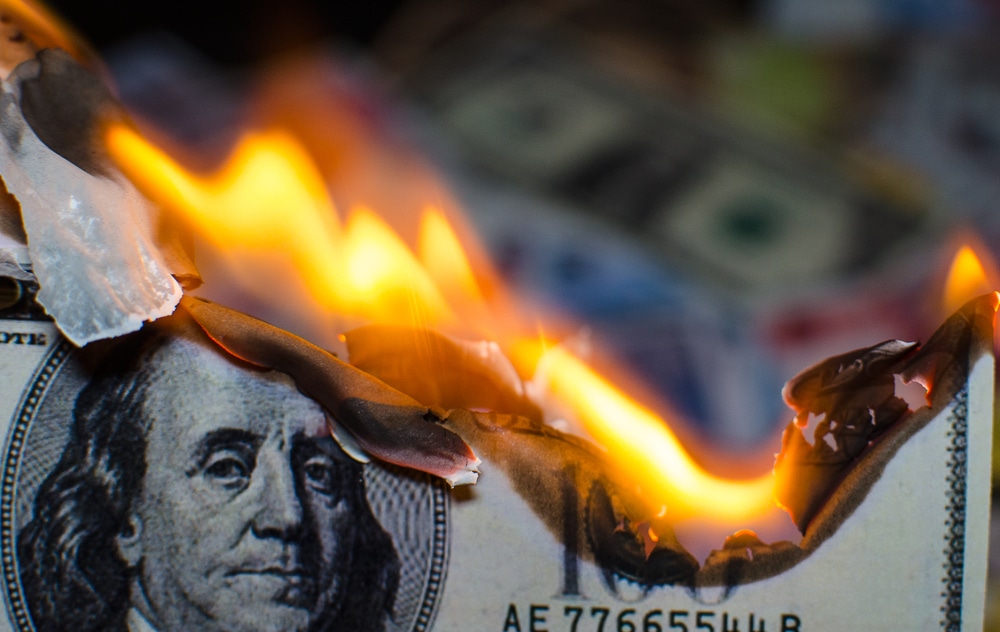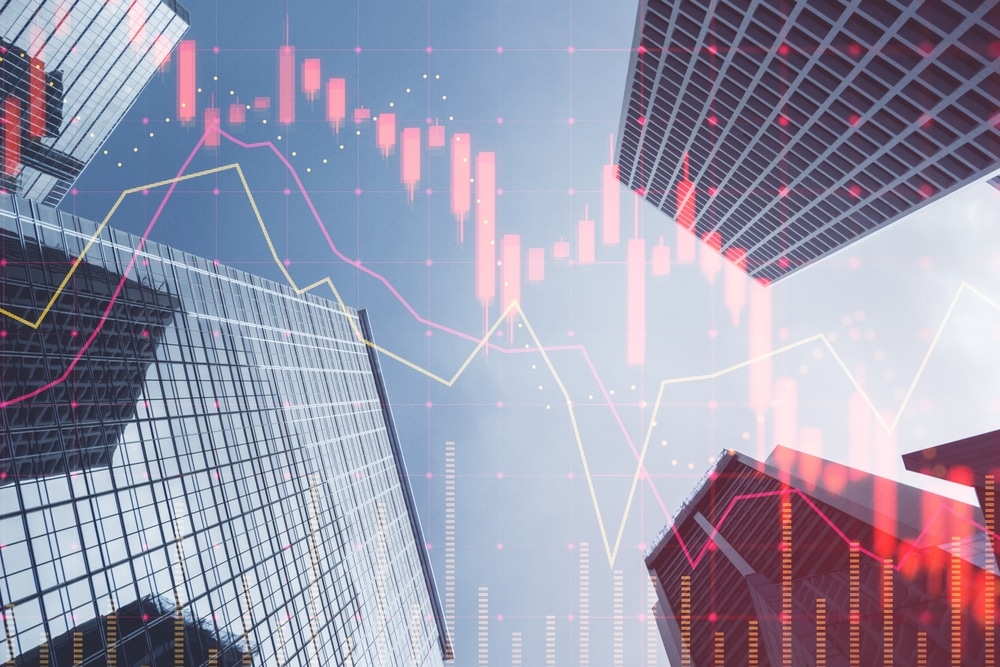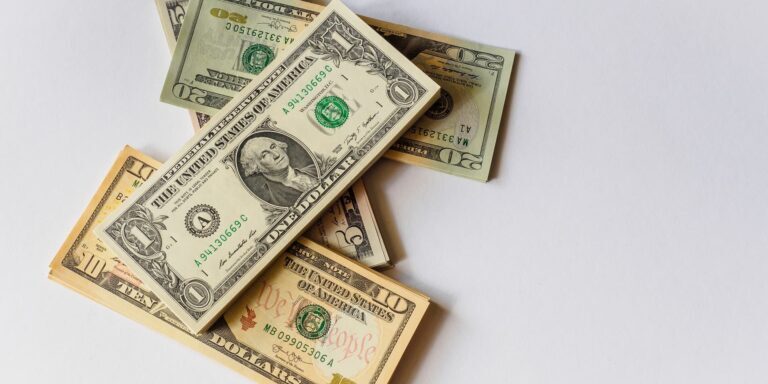
Fastest Drop Since 1982: Dollar’s Purchasing Power Plunging
EDITOR NOTE: The Fed and the US Treasury are now shifting the inflation narrative after a consecutive series of data shocks. In April, May, and June, inflation rose much higher and faster than expected. Annualize the “core” figure--that is, minus food and energy--and we’re looking at the worst plunge and fastest drop in American purchasing power since 1982. Judging from statements following each report, the Fed was apparently taken aback by the speed of the economy’s overheating. And this morning, Treasury Secretary Janet Yellen is attempting to smooth out the narrative, saying “We will have several more months of rapid inflation,” before it eases. What’s not quite going according to plan, in the Fed’s eyes, was to be expected all along according to the Treasury--a messaging transition that aims to conceal the obvious message that neither truly understands what’s going on at all and how it's going to end up. Remember, purchasing power declines have never reversed in the history of the dollar. What’s “lost” tends to remain permanent. And the only way to protect your assets and wealth from continual decline is to seek safety in physical gold and silver--the only two assets that can provide capital preservation and portfolio growth whether inflation creeps in a steady fashion or surges in a rapid torrent.
The Consumer Price Index jumped 0.9% in June from May, after having jumped 0.6% in May, and 0.8% in April – all of them the steepest month-to-month jumps since 2009, according to the Bureau of Labor Statistics today. The CPI without the volatile food and energy components (“core CPI”) jumped by 0.8% for the month and by 9.5% for the past three months annualized, the red-hottest “core CPI” since June 1982.
On an annual basis, including the periods of low inflation last fall, CPI jumped 5.4%. The CPI tracks the loss of the purchasing power of the consumer dollar – everything denominated in dollars for consumers, including what they can buy with their labor – and this dollar has dropped at a rate of 10.7% over the past three months annualized, the fastest drop since June 1982
Loss of purchasing power is “permanent,” as the chart shows.
There is nothing “transitory” or “temporary” about the loss of purchasing power as the chart above shows. Only a period of deflation can reverse some of the drop in purchasing power, which is a rare event in the US and happened only a few quarters over my life time, including for several months in 2008 – that little notch in the chart above.
The only aspect of inflation or the loss of purchasing power of the dollar that is temporary is the speed with which it progresses, faster or slower, from month to month.
Actual home price spikes v. charade of CPI for housing.
Housing costs – rent and homeownership costs – are included in the CPI as services and account for about one-third of overall CPI. It’s the biggie, but it barely moves despite surging housing costs.
The rent component of CPI (“rent of primary residence”), weighing 7.7% in the overall CPI has been ticking up every month this year at a constant 0.2%, including in June, and is up only 1.9% year-over-year.
The homeownership component (“Owners’ equivalent rent of residences”), weighing 23.7% in the overall CPI, rose 0.5% in June and only a stunningly low 2.3% year-over-year, even as home prices have exploded, no matter how they’re measured.
The median price of all types of existing homes in the US, as tracked by the National Association of Realtors, spiked by a record 24% compared to a year ago.
The Case-Shiller Home Price Index, which measures the price changes over time for the same house and is therefore an appropriate measure of house price inflation, spiked by 14.6% year-over year, the red-hottest increase in the data going back to 1987 (purple line). This contrasts with the languid CPI for homeownership (red line):
The reason the CPI’s homeownership component doesn’t track this rampant home-price inflation, and thereby the loss of the dollar’s purchasing power with regards to homes, is because it doesn’t track it. It is survey based, and tracks what homeowners think their home might rent for – hence its name, “owners’ equivalent rent of residences.” It is a measure of rent, as imagined by the homeowner.
Hotels & motels. The measures of rent and homeownership are the dominant components of “shelter.” Small components are “lodging away from home” which is mostly hotels and motels, weighing 0.9% of overall CPI. So they’re not the biggie. But prices soared 7.9% in June, and by 16.9% year-over-year.
So maybe prices for hotel rooms are just catching up to where they’re used to be. And with city hotels that are just now coming back and are still suffering from lack of business tourism, that’s one factor. But hotels that cater to leisure travelers, especially in recreational areas, such as around national parks, have been booked solid, and prices have jumped.
The CPI for services, which is dominated and kept in check statistically by the above charade of housing inflation, ticked up 0.4% in June and by 3.1% year-over-year.
Durable Goods inflation spiked 14.6%, biggest since at least the 1950s.
Durable goods, which include cars and trucks, appliances, consumer electronics, furniture, and the like, spiked by 3.5% in June from May and by 14.6% year-over-year, the biggest jump in the data going back to 1957. This jump was fueled by used and new vehicle prices.
Used Vehicle CPI exploded by 45% year-over-year, and by 10.5% in June. For months, I have been documenting this craziness, that cannot last and will not last, and that will partially unwind at some point. And there are now the first signs on the wholesale side that this was finally “Peak Insanity” in used cars and especially used trucks. Clearly, a portion of this ridiculous spike in the CPI for used cars and trucks is “transitory.”
Long-term price increases are squashed by “hedonic quality adjustments.” As you can see in the chart of the used vehicle CPI, used vehicle prices appear to have fallen over the 20 years between 2000 and early 2020, which is of course a ridiculous assertion. Prices of used cars and trucks have obviously jumped over those 20 years.
But the Bureau of Labor Statistics uses “hedonic quality adjustments” to account for improvements in vehicles over the years (for example, from a four-speed automatic transmission to a 10-speed electronically controlled transmission). The price increases estimated to be associated with “quality improvements” are removed from the CPI for new and used vehicles (hedonic quality adjustments explained here with my real-world two-decade F-150 and Camry price index v. the CPI for new vehicles).
The idea is that CPI measures price changes of the same item over time; and when the item is improved then it’s no longer the same item, and the price increase is not inflation because it reflects a better product. In reality, this has caused a consistent, purposeful, and very bipartisan understatement of inflation as measured by CPI. Same as with the housing data. The idea is to keep people in the dark.
New Vehicle CPI takes off. In June, the CPI for new cars and trucks jumped by 1.8%, after having jumped by 1.5% in May, the biggest month-to-month jumps since the cash-for-clunkers program kicked in during the Great Recession. The index is now up 5.3% year-over-year. Even the aggressive application of hedonic quality adjustments, that pushed down the new vehicle CPI even as vehicle prices rose in reality, cannot keep up with those price increases:
What to make of it.
In the inflation data today, there are completely understated components, such as housing inflation, which in reality is red hot. And there are temporary factors, such as the spike in used vehicles, that cannot last. And price increases are spreading to other categories.
What we will get in the future is ups and downs of the monthly inflation rate that will give false hopes of declining inflation, followed by increases that wipe out those hopes. And we still don’t see the actual inflation rates because of housing costs not being properly included and because of other strategies, such as the overly aggressive application of hedonic quality adjustments. So inflation is here, and its big, and its understated, but it will change up and down on a month to month basis.
Meanwhile, the Fed is still buying $40 billion a month in mortgage-backed securities, thereby repressing mortgage rates, thereby doing everything it can to further heat up inflation in the housing market, and it’s still buying $80 billion in Treasury securities a month, and it is keeping its policy rates near 0%, to repress short-term and long-term interest rates in general, and to inflate asset prices and consumer prices, thereby further burning the purchasing power of the dollar.
Originally posted on WolfStreet

